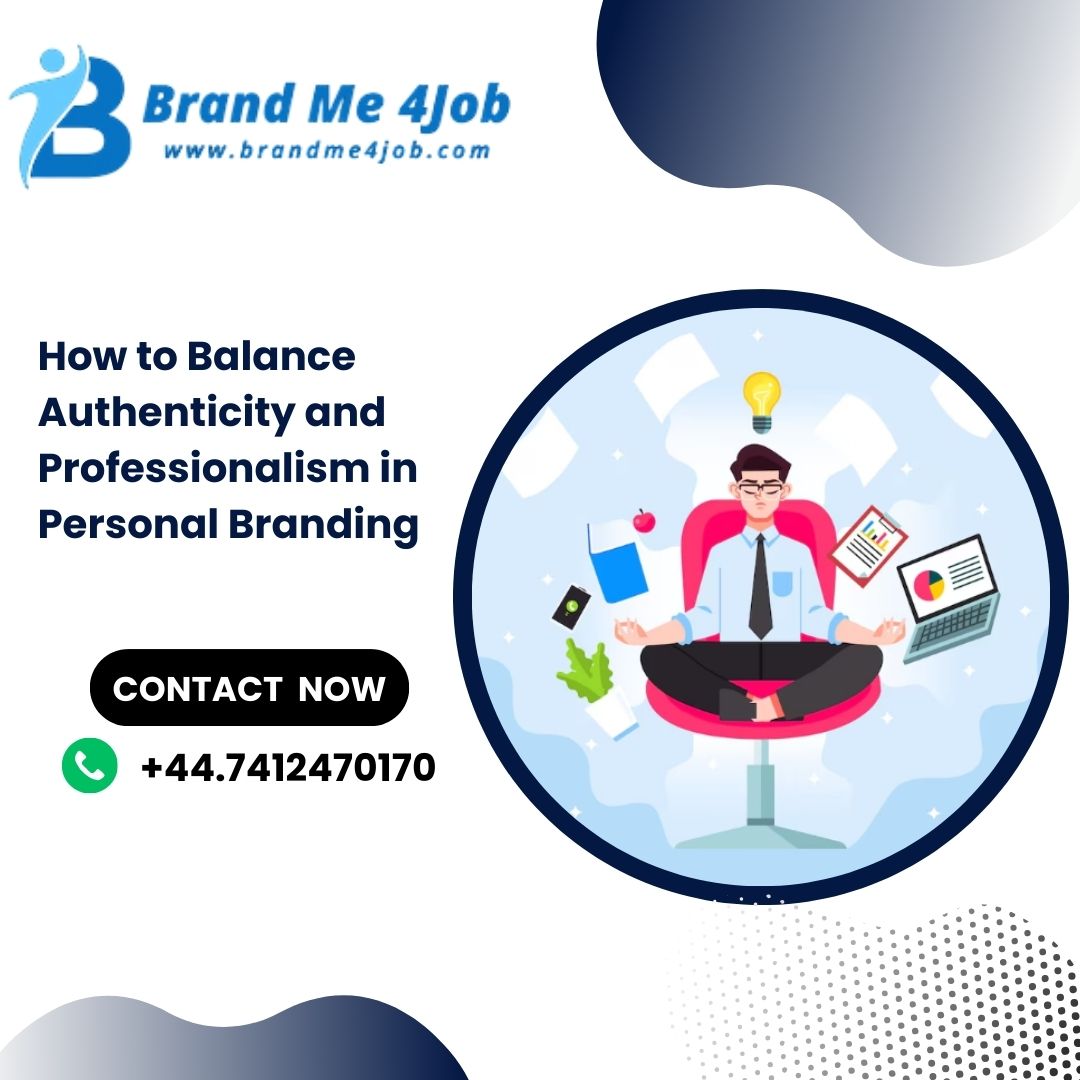How to Balance Authenticity and Professionalism in Personal Branding
How to Balance Authenticity and Professionalism in Personal Branding. In the age of digital transparency, building a personal brand is no longer optional—it’s essential. But the biggest challenge lies in striking the right balance between authenticity and professionalism. Go too far in either direction, and your brand may either seem untrustworthy or overly polished and disconnected.
So, how do you present your true self while still maintaining the credibility and polish expected in a professional environment?
This guide explores practical strategies to help you walk the fine line between being genuine and respectable, so your personal brand resonates powerfully with the right audience—especially employers, clients, and industry peers.
Why Both Authenticity and Professionalism Matter
Authenticity builds trust. People connect with people, not brands. They want to know your story, your values, and your voice. Being authentic makes you memorable, relatable, and believable.
Professionalism, on the other hand, builds credibility and respect. It tells your audience you’re serious, skilled, and capable of delivering value. Employers and clients expect reliability, quality communication, and ethical behavior.
Together, these two forces create a balanced personal brand that’s human yet trustworthy, real yet refined.
Step 1: Know Who You Are and What You Stand For
The foundation of authentic professionalism is self-awareness. Start by defining:
-
Your core values (e.g., integrity, creativity, growth, empathy)
-
Your purpose or mission (e.g., “Helping young entrepreneurs tell compelling stories”)
-
Your strengths and skills (e.g., public speaking, leadership, design)
These form the bedrock of a brand that feels true to you and resonates with others.
✅ Example: “As a data analyst, I combine technical skills with a human-first mindset to help nonprofits make smarter decisions.”
Step 2: Craft a Brand Voice That Reflects Both Sides
Your brand voice is the tone, language, and attitude you use in your communication—across social media, emails, blogs, or interviews.
To strike the right balance:
-
Be clear and concise, not vague or over-complicated.
-
Use natural language while avoiding slang or jargon overload.
-
Show warmth and personality, but stay respectful and appropriate.
-
Maintain consistent tone across platforms.
✅ Authentic & professional: “I’m passionate about using AI to solve real-world problems—especially in education and healthcare.”
❌ Too casual: “I’m an AI nerd who loves hacking stuff and ranting about tech all day.”
❌ Too robotic: “I have extensive experience leveraging artificial intelligence in multidisciplinary frameworks.”
Step 3: Be Transparent—But Selectively
You don’t need to share every detail of your personal life to be authentic. But a touch of transparency goes a long way.
Here’s what you can share:
-
Your journey (challenges, lessons, turning points)
-
Your goals and motivations
-
Behind-the-scenes of your work or process
-
Real wins and failures
-
Your interests that align with your brand
Avoid sharing:
-
Polarizing opinions unrelated to your profession
-
Excessive personal or emotional content
-
Rants, gossip, or drama
-
Anything that could damage your professional reputation
Professional vulnerability—the ability to be honest about your journey without oversharing—is a powerful branding tool.
Step 4: Curate Your Online Presence Intentionally
Authenticity doesn’t mean posting unfiltered content. Curation is key. Think of your online presence as your digital portfolio—a space where your professional self and authentic voice meet.
Audit your public profiles regularly:
-
Is your LinkedIn bio both informative and personable?
-
Do your Instagram highlights reflect your creative or career-related interests?
-
Does your website tell your story, not just list achievements?
-
Are your tweets helpful, thoughtful, or inspiring?
Use content themes to guide your posts—such as personal insights, industry trends, client testimonials, behind-the-scenes projects, and values-based reflections.
Step 5: Dress Your Brand—Literally and Visually
What you wear in profile pictures or during Zoom meetings says as much about your brand as what you say. Aim for:
-
Clean, modern, and context-appropriate style
-
Brand colors and consistent visuals across platforms
-
High-quality profile photos that reflect both professionalism and personality
For visual branding (logos, portfolio design, CV layout):
-
Avoid overly flashy or complex designs
-
Stick to 2–3 brand colors
-
Use clear fonts, white space, and intuitive layouts
The goal is to appear approachable yet polished.
Step 6: Deliver Value Through Everything You Share
Ultimately, your personal brand is not about you—it’s about the value you bring to others.
Even when sharing your story, always ask: “How does this help or inspire my audience?”
Examples of valuable content that blends authenticity and professionalism:
-
“What failing my first internship taught me about resilience in digital marketing.”
-
“Three tools I use to stay focused as a remote UX designer.”
-
“Why I switched careers from finance to sustainability—and what I’ve learned.”
Each of these is relatable, helpful, and human—a perfect blend of real and reliable.
Step 7: Engage with Others Like a Pro
How you comment, message, and respond to others also reflects your brand.
Best practices:
-
Be respectful and supportive in comments
-
Respond to messages and feedback promptly
-
Give credit where it’s due
-
Ask thoughtful questions that show curiosity
-
Avoid trolling, sarcasm, or aggressive debates
Engagement is where authenticity shines, and where your reputation is built in real-time.
Step 8: Evolve Without Losing Your Essence
As your career grows, your personal brand will naturally evolve. Stay adaptable—but keep your core values and message consistent.
-
Update bios and profiles every 6 months
-
Reflect on what content performs well and what feels most “you”
-
Add new achievements, roles, or skills as your story develops
-
Be open about transitions (“Here’s why I moved from design to product management…”)
Authenticity is not about being static—it’s about being true to yourself in every stage of your journey.
Conclusion: Find the Sweet Spot Where Real Meets Refined
Balancing authenticity and professionalism isn’t about choosing one over the other—it’s about merging them into a brand that’s confident, clear, and compelling.
When you speak from your truth and deliver with polish, people listen.
When you show personality and expertise, employers trust you.
When you’re both relatable and reliable, you become unforgettable.
Let your personal brand reflect who you are—and who you’re becoming.
Thank you for read our blog “How to Balance Authenticity and Professionalism in Personal Branding”
Read our more BLOG here
For Personal Branding help, feel free contact | +44.7412470170




